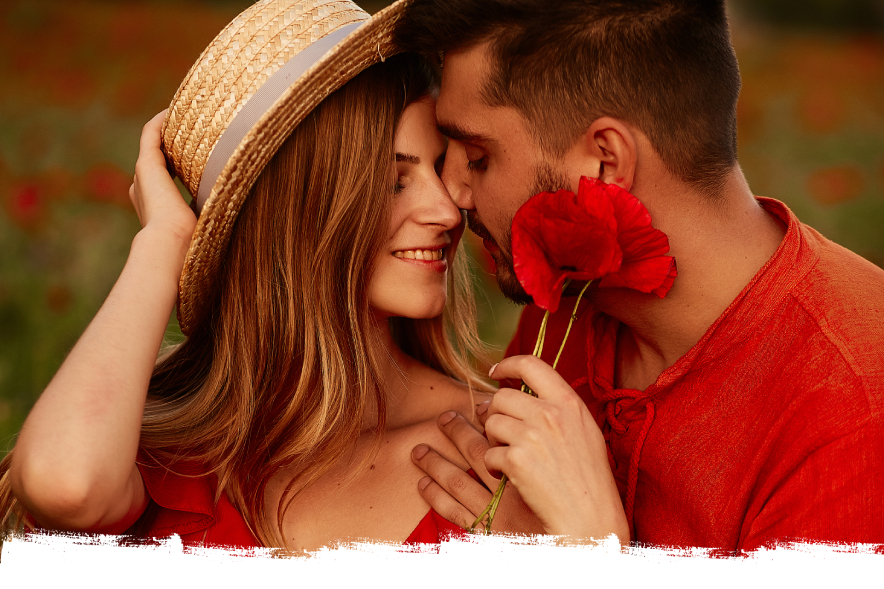The Heart's Riddle: What is Love?
Love is a profound and passionate affection towards someone. It's a complex blend of emotions, behaviors, and beliefs associated with warmth, protectiveness, and respect for another person. Love can also be comprehended as a cognitive and social phenomenon, fueled by mutual care and shared experiences.
The Enchantment of Love: The Wonder Behind This Emotion
What makes love so exceptional is its ability to alter our perception of reality, shape our interactions, and dictate our actions. It can make us euphoric, melancholic, altruistic, or even irrational. Love, in its essence, carries the power to transform individuals and societies alike.
The Mosaic of Amour: 10 Captivating Facts about Love

- Falling in love has similar neurological effects as the high from cocaine. Both experiences trigger the same euphoria-inducing chemicals in the brain.
- According to one study, it only takes up to 4 minutes to decide whether you like someone or not.
- When two lovers gaze into each other's eyes, their heart rates synchronize.
- Cuddling releases natural painkillers. Oxytocin, the so-called "love" or "cuddle hormone," can reduce headaches significantly.
- Love can literally make you glow. It increases the blood flow to the skin due to the dilation of blood vessels.
- The tradition of the diamond engagement ring comes from a marketing campaign by De Beers in the late 1930s. Before that, engagement rings didn't typically feature diamonds.
- People at the same level of attractiveness are more likely to end up together, according to a concept known as "matching hypothesis."
- Philophobia is the fear of falling in love.
- According to a survey, men are quicker to say "I love you" first in a relationship.
- Romantic love, typically characterized by euphoria and obsession, tends to fade within a year. The deep affectionate bond that follows is known as compassionate love.
Mind and Heart Interplay: Psychological Insights into Love
Our understanding of love is not just emotional but deeply psychological. For instance, research suggests that long-lasting love results from activities that keep the brain's reward system triggered, like laughing together and trying new activities. Also, psychologically, people are more likely to commit to a partner they find physically attractive, a phenomenon called the "halo effect."
The Many Shades of Affection: An Array of Love Facts

Love's vast canvas is painted with countless hues of facts—cute, random, weird, human, deep, and cool. Here, we dive into an assortment of these fascinating tidbits that collectively showcase the marvel that is love.
Physiological Facts About Love
Rapid Eye Movement: When looking at someone they find attractive, individuals’ eyes tend to linger on the left side of the face.
Cuddling Releases Natural Painkillers: Oxytocin, the hormone released when we cuddle or bond socially, can help alleviate headaches and other physical pains.
"Lovestruck" Isn't Just a Phrase: Being in love can induce a state of constant distraction, where individuals may find it challenging to focus on tasks that require significant attention.
Love at First Sight: It takes approximately 0.2 seconds for the euphoria-inducing chemicals - dopamine, oxytocin, adrenaline - to start affecting the brain when you see someone you are attracted to.
The Truth about Broken Hearts: The phenomenon of "Broken Heart Syndrome" is real and can cause intense chest pain and shortness of breath. The condition, also known as stress cardiomyopathy, can be triggered by episodes of extreme stress or loss like a breakup or death of a loved one.
Psychological Facts About Love
The Triangular Theory of Love: Psychologist Robert Sternberg suggests love is composed of three elements - intimacy, passion, and commitment. Different combinations of these three components result in different types of love.
Attachment Styles: According to psychologists, there are three types of attachment styles in love - secure, anxious, and avoidant. They stem from the bond we had with our caregivers in our early childhood and often determine our behavior in relationships.
Love and Creativity: Research has found that thinking about love can make you more creative, whereas thinking about sex can make you more analytical.
Sociological Facts About Love
All about Timing: A study found that men are more likely to say "I love you" first in a relationship, usually after about three months of dating.
The Bond of Marriage: Studies indicate that married couples who meet online have a higher probability of happiness and a lower divorce rate.
Love and Longevity: Happily married couples tend to live longer, demonstrating the positive effects of love on physical health and longevity.
Love and Memory: Love can help improve memory. This is because the emotions attached to love events get stored in long-term memory.
The Impact of a Hug: A 20-second hug helps the body release oxytocin, a hormone that helps reduce fear, increase trust, and is linked to empathy and relationship building.
Love at First Sight May Be Survival Instinct: The notion of "love at first sight" may be linked to our evolutionary survival instinct to quickly identify a suitable mate.
Shared Experiences Build Love: Studies show that couples who share new experiences and face challenges together are more likely to stay together.
Long-distance Relationships are More Common: With the rise of the internet, long-distance relationships have become more common. About 3 million married couples in the US live apart.
Education and Love: Studies show that people with higher education levels are more likely to marry and stay together.
Fun Facts About Love

Philematology: The science of kissing is known as philematology. When two people share a kiss, they exchange between 10 million and 1 billion bacteria.
Love and Pain: Research has shown that love can also act as a natural painkiller. Brain scans reveal that looking at pictures of romantic partners significantly reduces the sensation of pain.
Wedding Rings: The tradition of wearing a wedding ring on the fourth finger of the left hand originates from an ancient belief that this finger has a vein, the "vena amoris" or "vein of love," that runs directly to the heart.
Two-thirds of people tilt their head to the right when they kiss: A German researcher observing over 200 couples found that two-thirds of them tilt their head to the right when they pucker up.
The 'honeymoon phase' lasts for about a year: Studies have found that the blissful honeymoon phase in a relationship typically lasts for about 12 to 18 months.
The 'Apple' of My Eye: The phrase "apple of my eye" comes from ancient times when apples were considered a symbol of love or desire.
The Longest Marriage: The longest recorded marriage lasted 86 years and 290 days. It was between Herbert and Zelmyra Fisher.
Love Letters: Nearly three in ten (29%) adults have written a love letter in the past year.
It's all about Timing: The most popular day for breakups is Monday, and the most popular time for breakups is around two weeks before Christmas.
The "Love Hormone" and Men: Oxytocin, also known as the "love hormone," affects men and women differently. In men, it can promote fidelity, while it enhances emotional empathy in women.
Symbolism of Roses: Roses are commonly associated with love and romance. They were sacred to a number of goddesses including Isis and Aphrodite and are often used to convey messages of love.
Love in the Animal Kingdom: Some animals exhibit love-like behaviors. For instance, emperor penguins mate for life and co-parent their offspring.
